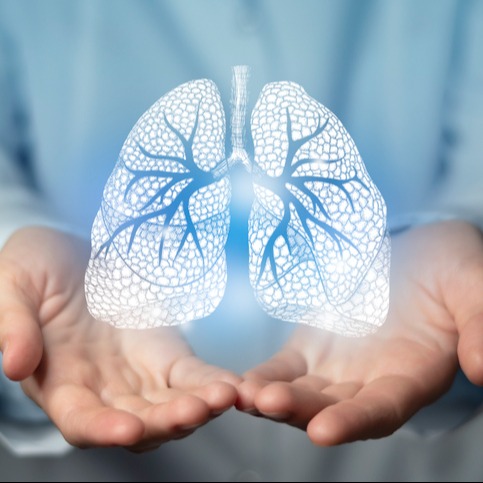
Key Takeaways
Prompt symptom recognition is crucial for effective management of exercise-induced asthma.
Tailored treatment plans, including medications and non-pharmacological strategies, enhance symptom control.
Open communication with healthcare providers empowers individuals in managing exercise-induced asthma.
Understanding risk factors and differentiating from other respiratory conditions help in accurate diagnosis.
Regular monitoring of symptoms allows for timely adjustments to optimize control and improve quality of life.
Author’s Note: The details of the following medical history have been altered to protect the patient’s privacy. However, the story is true. Jamie was able to overcome his struggles with asthma after careful follow-up with me and monitoring of his symptoms and lung function. If you or a loved one has difficulty with asthma, or if there are any concerns in this regard, I urge you to seek the opinion of a licensed medical professional.
The Patient Didn’t Read the Textbook!
This is a saying I learned in medical school: what we learn in class often differs significantly from what we see in the office. Humans are diverse, complex creatures, and figuring out what is happening to them is frequently challenging. Medical diagnosis and treatment require an open mind and a willingness to accept that patients don’t behave or respond as described in medical textbooks.
An excellent example of this phenomenon is my experience with my patient, Jamie, a 17-year-old high school senior who came to me for a pulmonary (lung) consultation a few years back.
Jamie played varsity soccer. He told me that the practices were intense and that he often needed to stop during scrimmages because of coughing fits. He was in good cardiovascular condition and never complained of shortness of breath or wheezing, only coughing with intense exercise, which he attributed to allergies.
A history of Asthma
Jamie told me that whenever he caught a cold, it would “go into his chest,” meaning he would develop a phlegmy cough lasting for a couple of weeks after he began to feel better. During my pulmonology fellowship, I learned that when a patient describes their cold progressing to a phlegmy cough, it might indicate asthma. He also mentioned experiencing mild seasonal allergies, which are sometimes linked to asthma. Lastly, he had a significant family history of asthma. These historical facts indicated to me that I should explore the possibility that Jamie had asthma.
How I Diagnose Exercise-Induced Asthma in the Office
I performed a breathing test called spirometry. This test involves the patient blowing into a tube as hard and long as possible. The spirometer machine measures the speed at which the air comes out of their lungs. Jamie’s spirometer test was normal; it showed excellent lung function at rest.
Then, I asked Jamie to go outside and run around the building as long as he could. Jamie looked at me like I was crazy, but there was a method to my madness. Jamie put on his sneakers and sprinted around the building. When he returned to the office, Jamie was already coughing. I repeated the spirometer test.
The test showed that the small airways deep in his lungs were constricted, as would happen with someone with asthma. I gave Jamie two puffs of an asthma rescue inhaler and repeated the test twenty minutes later. His breathing test returned to normal. The diagnosis was made: Jamie had exercise-induced asthma.
Treatment of Exercise-Induced Asthma
I prescribed a beclomethasone inhaler and a rescue inhaler (albuterol) for Jamie. I also prescribed a spacer device and provided Jamie with instructions on its use. I advised him to use the spacer with the beclomethasone inhaler every morning and scheduled a follow-up appointment for one month later. Additionally, I thoroughly discussed the potential side effects with Jamie.
The side effects of beclomethasone inhalers may include throat or mouth irritation, coughing, hoarseness, and dry mouth. Occasionally, users may experience fungal infections in the mouth or throat, which can be minimized by rinsing the mouth after each use. Utilizing the spacer device also reduces this risk as it ensures that the tiny medication particles are inhaled into the lungs while larger particles, which may otherwise land in the mouth, remain in the spacer.
Furthermore, prolonged use of beclomethasone inhalers at high doses may elevate the risk of systemic side effects, such as adrenal suppression, osteoporosis, and cataracts. Patients using these inhalers require regular monitoring by their healthcare provider to mitigate these risks and ensure optimal treatment outcomes. I emphasize the importance for all patients to discuss potential side effects with their physicians, encouraging proactive communication about any concerns.
One month later, Jamie returned, reporting no further coughing episodes during soccer matches. I instructed him to run around the building again and repeated the spirometry test. Jamie’s spirometry results fell within normal limits, indicating successful management of his exercise-induced asthma!
The Importance of Discussing Concerns with Your Physician
Discussing questions and concerns about exercise-induced cough or asthma with a physician is paramount for several reasons. Firstly, as illustrated in Jamie’s case, symptoms triggered by exercise can serve as indicators of underlying respiratory issues that necessitate accurate diagnosis and appropriate management. Left untreated, exercise-induced asthma can significantly impede an individual’s ability to participate in physical activities, resulting in diminished fitness levels and quality of life.
Seeking guidance from a physician enables a tailored assessment of the symptoms and their potential causes. A healthcare professional can discern between asthma and other respiratory conditions based on factors such as symptom frequency, severity, and triggers. This differentiation is crucial because the treatment strategy may vary depending on the underlying condition. For example, while occasional exercise-induced asthma may be managed adequately with short-acting bronchodilators, individuals with persistent asthma may require long-term controller medications for effective symptom control.
Discussing exercise-induced symptoms with a physician is instrumental in crafting a personalized management plan. This plan may encompass various interventions, including medications such as inhalers or oral medications, as well as non-pharmacological strategies like pre-exercise warm-up routines and identification of triggers. Collaborating closely with a healthcare provider enables individuals to tailor their treatment regimen, effectively minimizing symptoms and enhancing their ability to engage in physical activities safely.
Moreover, regular follow-up appointments with a physician are indispensable for monitoring the efficacy of the management plan and making any necessary adjustments. Exercise-induced symptoms can fluctuate over time, and healthcare professionals are adept at guiding modifications to treatment strategies as needed. Engaging in open dialogue with a physician fosters effective communication and empowers individuals to take an active role in managing their respiratory health.
Rely on PlanetDrugsDirect.com to Buy Prescription Discount Qvar Redihaler
As a trusted prescription referral service, we offer important benefits whenever you order online. Each of our partner pharmacies and/or government-approved dispensaries is committed to providing the best experience possible of any online prescription referral service on the internet. We offer:
Low prices
Quick turn-around times
Generic and brand-name medications
Unparalleled customer service
Sources
Bougault V, Turmel J, Boulet LP. Perception of bronchoconstriction in athletes with asthma: a field-based study. J Allergy Clin Immunol. 2019;144(2):527-534. doi:10.1016/j.jaci.2019.02.022
Helenius IJ, Tikkanen HO, Sarna S, Haahtela T. Asthma and increased bronchial responsiveness in elite athletes: atopy and sport event as risk factors.
J Allergy Clin Immunol. 1998;101(5):646-652. doi:10.1016/s0091-6749(98)70191-6
Parsons JP, Hallstrand TS, Mastronarde JG, Kaminsky DA, Rundell KW, Hull JH; American Thoracic Society Subcommittee on Exercise-induced Bronchoconstriction. An official American Thoracic Society clinical practice guideline: exercise-induced bronchoconstriction. Am J Respir Crit Care Med. 2013;187(9):1016-1027. doi:10.1164/rccm.201303-0437ST
Rundell KW. High levels of airborne ultrafine and fine particulate matter in indoor ice arenas. Inhal Toxicol. 2003;15(3):237-250. doi:10.1080/08958370304464
Weiler JM, Bonini S, Coifman R, et al. American Academy of Allergy, Asthma & Immunology Work Group report: exercise-induced asthma. J Allergy Clin Immunol
. 2007;119(6):1349-1358. doi:10.1016/j.jaci.2007.03.053
 Medically reviewed by
Medically reviewed by 





